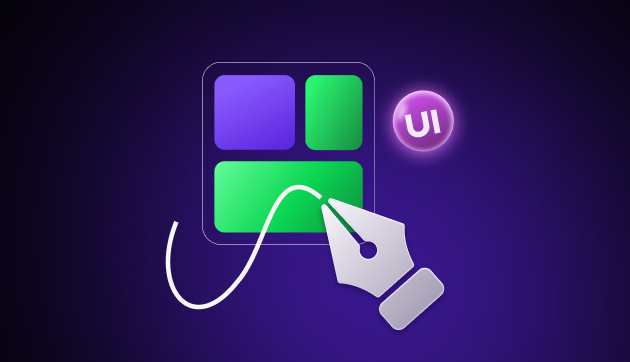
Competitive Analysis for a UX Design
Mar 12, 2025 4 Min Read 2285 Views
(Last Updated)
UX designers play a pivotal role in customer satisfaction and retention. Thus, a competitive analysis for UX design is mandatory to understand customer’s needs and requirements. It emerges as a potent tool in the UX designer’s profession, offering insights that can transform good designs into exceptional ones.
If you’re looking for a complete idea of how to perform competitive analysis for a UX design, you’ve come to the right place.
In this blog, let’s read about competitive analysis for a UX design. and the steps followed to perform it. You’ll also understand some of the reasons for performing competitive analysis in UX design and the best practices UX designers follow:
Table of contents
- What is Competitive Analysis?
- How to Perform a Competitive Analysis: A Step-by-Step Guide
- Why Perform a UX Competitive Analysis?
- Best Practices to Follow While UX Competitive Analysis
- Final Thoughts
- FAQs
- How do you present a UX competitor analysis?
- What is comparative analysis in UX?
- What is the purpose of UX competitive analysis?
- Why is competitive analysis important in UX design?
What is Competitive Analysis?
Competitive analysis in UX design involves a systematic evaluation of the digital experiences offered by competitors in a specific industry. It goes beyond just analyzing visual aesthetics and delves into the intricacies of functionality, navigation, accessibility, and overall user satisfaction. The goal is not to copy but to learn from others’ successes and failures, ultimately enhancing the user journey for your product.
Enhance your knowledge about What is UI/UX?
As we proceed to the next phase, make sure you understand the fundamentals of UI/UX, which includes heuristic analysis, journey maps, testing, etc. If you want to explore more about it, join GUVI’s UI/UX Course with Placement Assistance. You’ll also learn about the tools used in UI/UX which are AdobeXD, Illustrator, Photoshop, Figma, and many more. Build some amazing real-time projects to get hands-on experience. Also, if you want to explore Figma through a Self-paced course, try GUVI’s Figma certification course.
How to Perform a Competitive Analysis: A Step-by-Step Guide

You need several skillsets required to perform competitive analysis for a UX design. Let’s now look into a step-by-step guide on how to perform competitive analysis for a UX design:
- Define Objectives: Clearly outline the goals of your competitive analysis. Whether it’s improving a specific aspect of your UX or gaining insights for an upcoming redesign, having defined objectives provides focus.
- Identify Competitors: Compile a list of direct and indirect competitors in your industry. Direct competitors offer similar products or services, while indirect competitors may provide alternatives that fulfill the same user needs.
- Analyze User Journeys: Dive into the user journeys of your competitors. Evaluate the onboarding process, navigation flow, and overall user experience. Identify pain points and moments of delight to inform your own design decisions.
- Evaluate Design Elements: Scrutinize the visual and interactive elements of competitors’ designs. Pay attention to color schemes, typography, iconography, and overall aesthetics. Identify patterns and trends that resonate with your target audience.
- Assess Functionality and Features: Examine the functionality and features offered by competitors. Identify what works well and what could be improved. Consider how these features align with user needs and expectations.
- Gather User Feedback: Look beyond your competitors’ design from a user’s perspective. Seek out reviews, testimonials, and user feedback to understand real-world experiences. This qualitative data can provide valuable insights into user satisfaction and pain points.
- Benchmark Performance: Compare the performance metrics of your product against those of your competitors. This includes page load times, responsiveness, and other technical aspects that contribute to a seamless user experience.
Also Read 8 Important Steps In The UX Design Process You Should Know
Why Perform a UX Competitive Analysis?
Apart from just knowing the steps followed, you should also know some of the best reasons why you should perform competitive analysis. Let’s explore some of the reasons here:

- Identifying Industry Standards: By examining competitors, UX designers can gain a comprehensive understanding of prevailing industry standards and user expectations. This knowledge is invaluable for setting benchmarks and ensuring that your design aligns with, or surpasses these standards.
- User-Centric Design: Uncovering the strengths and weaknesses of competitors’ UX designs allows for a more user-centric approach. This ensures that your design addresses pain points and provides solutions that resonate with the target audience.
- Innovative Insights: Competitive analysis sparks creativity and innovation by showcasing various design approaches. It encourages designers to think outside the box, adapt successful elements, and merge them with unique features to create a distinctive user experience.
- Efficient Problem Solving: Learning from competitors’ mistakes can save time and resources. By identifying design flaws and user frustrations in rival products, UX designers can proactively address potential issues in their designs, preventing user dissatisfaction.
- Adaptability and Evolution: In the dynamic digital landscape, adaptability is key. Regular competitive analysis allows UX designers to stay abreast of emerging trends, technological advancements, and shifts in user behavior, ensuring that their designs remain relevant and competitive over time.
Know More About Top 7 Ways To Use AI in UX Design
Best Practices to Follow While UX Competitive Analysis
Let’s now read about some of the best practices UX designers must follow while performing Competitive Analysis for a UX Design:
- Define Clear Objectives: Clearly outline the objectives of your competitive analysis. Whether you’re looking to improve a specific aspect of your UX or gather insights for a redesign, having well-defined goals will guide your analysis and ensure meaningful results.
- Identify Key Competitors: Begin by identifying your direct and indirect competitors. Focus on those who share a similar target audience and offer products or services that address comparable user needs. This helps in honing in on relevant insights.
- Establish Criteria for Evaluation: Develop a set of criteria against which you will evaluate competitors. This may include usability, visual design, information architecture, content strategy, accessibility, and performance. Clearly defined criteria provide a structured framework for analysis.
- Consider the Entire User Journey: Look beyond isolated touchpoints and consider the entire user journey. Assess the onboarding process, navigation flow, interactions, and touchpoints from discovery to post-purchase. Understanding the end-to-end experience provides a holistic perspective.
- Focus on User Feedback: User feedback is a goldmine of insights. Gather reviews, testimonials, and comments from users of competitor products. Understand what users appreciate and what frustrates them. This qualitative data provides a nuanced view of the user experience.
- Evaluate Visual Design Elements: Scrutinize the visual design elements of competitor interfaces. Pay attention to color schemes, typography, imagery, and overall aesthetics. Identify patterns and trends that resonate with your target audience, but also look for unique differentiators.
- Assess Functionality and Features: Examine the functionality and features offered by competitors. Identify what works well and what could be improved. Consider how these features align with user needs and expectations. This analysis can inform your feature prioritization and development.
- Analyze Content Strategy: Content is a crucial component of UX. Evaluate the content strategy competitors employ, including the content’s tone, voice, and relevance. Consider how information is presented and organized to enhance user understanding and engagement.
- Benchmark Performance Metrics: Compare the performance metrics of your product against those of your competitors. Assess page load times, responsiveness, and other technical aspects that contribute to a seamless user experience. Identify areas where your product may lag or excel.
- Stay Updated on Industry Trends: The digital landscape evolves rapidly. Stay updated on industry trends, emerging technologies, and shifts in user behavior. A forward-looking analysis ensures that your UX design remains relevant and competitive in the long run.
Kickstart your UI/UX journey by enrolling in GUVI’s UI/UX Course where you will master technologies like AdobeXd, Illustrator, and Figma, and build interesting real-life UI/UX projects. Alternatively, if you would like to explore Figma through a Self-paced course, try GUVI’s Figma certification course.
Final Thoughts
Competitive analysis isn’t about copying rivals; it’s about learning, adapting, and evolving to create a user experience that stands out. By systematically evaluating competitors and incorporating the insights gained into your design process, you position yourself not just as a follower, but as a leader in crafting digital experiences that captivate and retain users. With these simple steps, you can also perform competitive analysis and create a user-friendly user experience.
Also Explore | Conducting Competitive Analysis in UI Design: All You Need To Know
FAQs
There are definite steps that you should follow to perform competitor analysis:
1. Set your goals and adhere to them.
2. Build a competitor’s shortlist.
3. Find what you have in common with competitors.
4. Create a feature comparison chart.
5. Compare your product to competitors.
6. Analyze your findings.
7. Present your UX competitive analysis.
“Comparative or Competitive analysis” focuses more on direct competitors who provide almost the same services where you check your competitors and try to evaluate yourself on several parameters that could make your UI look great and customers can have an awesome user experience.
Conducting a UX competitor analysis can be a powerful tool to improve user experience and gain an edge over your competitors. By carefully analyzing the strengths and weaknesses of competing websites, you can ensure that your website stands out and provides customers with the best possible experience.
This is an essential part of the UX design process because it helps companies understand the broader context of their product. By analyzing competitors, businesses can differentiate their products and create a unique user experience.










![What Does a UI/UX Designer Do? [Career Guide] 5 UI/UX](https://www.guvi.in/blog/wp-content/uploads/2023/12/What-Does-a-UI_UX-Designer-Do_.png)



![How To Switch Career In UI/UX Design? Easy or Hard? [2025] 7 how_to_switch_to_a_career_in_ui_ux_design_](https://www.guvi.in/blog/wp-content/uploads/2023/12/how_to_switch_to_a_career_in_ui_ux_design_.webp)




Did you enjoy this article?